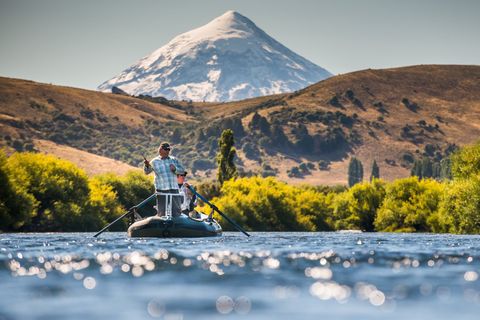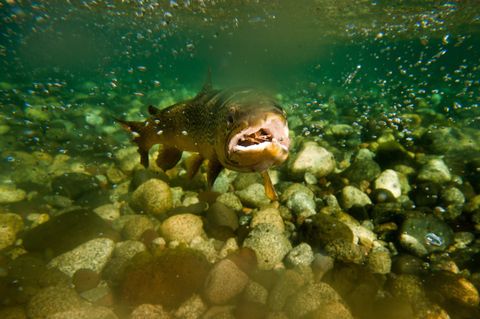
Argentina

Argentina, officially the Argentine Republic, is a federal republic located in southeastern South America. With a mainland surface area of 2,780,400 square kilometres (1,03,518 square miles). Argentina is located in southern South America, sharing land borders with Chile across the Andes to the west; Bolivia and Paraguay to the north; Brazil to the northeast, Uruguay and the South Atlantic Ocean to the east; and the Drake Passage to the south; for an overall land border length of 9,376 kilometres (5,826 miles). Its coastal border over the Rio de la Plata and South Atlantic Ocean is 5,117 kilometres (3,180 miles) long.
Argentina is the eighth-largest country in the world, the second-largest in Latin America and the largest Spanish-speaking one. Argentina claims sovereignty of part of Antarctica, the Falkland Islands, South Georgia and the South Sandwich Islands. The country is subdivided into 23 provinces and one autonomous city, Buenos Aires, which is the federal capital of the nation.
Argentina's highest point is Aconcagua in the Mendoza province (6,959 metres (22,831 feet) above sea level), also the highest point in the Southern and Western Hemispheres. The lowest point is Laguna del Carbón in the San Julián Great Depression Santa Cruz province (-105 metres or -344 feet below sea level), also the lowest point in the Southern and Western Hemispheres, and the seventh lowest point on Earth.
The northernmost point is at the confluence of the Grande de San Juan and Rio Mojinete rivers in Jujuy province; the southernmost is Cape San Pio in Tierra del Fuego province; the easternmost is northeast of Bernardo de Irigoyen. Misiones and the westernmost is within Los Glaciares National Park in Santa Cruz province. The maximum north-south distance is 3,694 kilometres (2,295 miles), while the maximum east-west one is 1,423 kilometres (884 miles).
Some of the major rivers are the Paraná, Uruguay - which join to form the Rio de la Plata, Salado, Negro, Santa Cruz, Pilcomayo, Bermejo and Colorado. These rivers are discharged into the Argentine Sea, the shallow area of the Atlantic Ocean over the Argentine Shelf (an unusually wide continental platform). Its waters are influenced by two major ocean currents: the warm Brazil Current and the cold Falklands Current.
Argentina has an estimated population of over 40 million and the national language is Spanish. However, English is taught in schools starting at the elementary level. Approximately 42% of Argentinians claim to speak English, with 15% claiming to have a high level of language proficiency.
Argentina is a multicultural country with significant European influences. Its cities are largely characterized by both the prevalence of people of European descent and conscious imitation of European styles in fashion, architecture and design. Modern Argentine culture has been largely influenced by Italian, Spanish and other European immigration like France, the United Kingdom and Germany. Museums, cinemas and galleries are abundant in all the large urban centers, as well as traditional establishments offering live music of a variety of genres. The other big cultural influence is the gauchos, and their traditional country lifestyle of self-reliance. Additionally, indigenous traditions have been adsorbed into the general cultural milieu.
Although the most populated areas are generally temperate, Argentina has an exceptional climatic diversity, ranging from subtropical in the north to subpolar in the far south. The average annual precipitation ranges from 150 millimetres (6 inches) in the driest parts of Patagonia to over 2,000 millimetres (79 inches) in the westernmost parts of Patagonia and the northeastern parts of the country. Mean annual temperatures range from 5°C (41°F) in the far south to 25°C (77°F) in the north.
Major wind currents include the cool Pampero Winds blowing on the flat plains of Patagonia and the Pampas; following this cold front, warm currents blow from the north in middle and late winter, creating mild conditions. The Sudestada usually moderates cold temperatures but brings very heavy rains, rough seas and coastal flooding. It is most common in late autumn and winter along the central coast and in the Rio de la Plata estuary, The Zonda, a hot dry wind, affects Cuyo and the central Pampas. Squeezed of all moisture during the 6,000 metre (19,685 feet) descent from the Andes. Zonda winds can blow for hours with gusts up to 120 km/h (75 mph), fueling wildfires and causing damage; between June and November, when the Zonda blows, snowstorms and blizzard conditions usually affect higher elevations.
Due to the diverse geography of Argentina, a wide variety of faunal species are present. Many of these species live in the subtropical north. Prominent animals include big cats like the jaguar, puma and ocelot; primates (howler monkey); large reptiles (crocodiles), the Argentine black and white tegu and a species of caiman. Other animals include the tapir, peccary, capybara, bush dog and various species of turtle and tortoise. There are a wide variety of birds, notably hummingbirds, flamingos, toucans and swallows.
The central grasslands are populated by the giant anteater, armadillo, pampas cat, maned wolf, cavias and the rhea a large flightless bird. Hawks, falcons, herons and tinamous (Argentine 'false partridges') inhabit the region. There are also pampas deer and pampas foxes. Some of these species extend into Patagonia.
The western mountains are home to animals including the Llama, guanaco and vicuña which are among the most recognizable species of South America. Also in the region are the fox, viscacha, Andean mountain cat, kodkod and the largest flying bird in the New World, the Andean condor.
Southern Argentina is home to the cougar, huemul, pudú (the worlds smallest deer) and the introduced, non-native, wild boar. the coast of Patagonia is rich in animal life: elephant seals, fur seals, sea lions and numerous species of penguin. Cormorants are found in the far south.
The territorial waters of Argentina have abundant ocean life; mammals such as dolphins, orcas and whales like the southern right whale, a major tourist draw for naturalists. Marine fish include sardines, Argentine hakes, dolphinfish, salmon and sharks; also present are squid and king crab in Tierra del Fuego. Rivers and streams in Argentina have many species of trout, char and salmon as well as the South American golden dorado.
FISHING PACKAGES IN ARGENTINA

Argentina

Argentina



